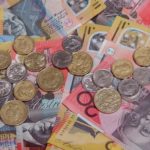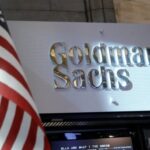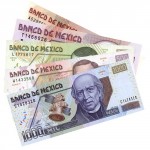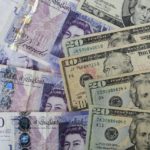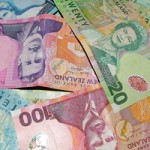Precious metals were pressured by a plethora of positive reports by the US today. Additionally, the Eurozone posted some disappointing figures, prompting a retreat for the euro, which further boosted the dollar. Ukraine remained as only firm support.
Gold futures for delivery in June traded for $1 295.6 per troy ounce at 13:40 GMT on the COMEX in New York today, falling by 0.79%. Daily high and low stood at $1 307.3 and $1 290.9 per troy ounce, respectively. Yesterday the precious metal added 0.86%, reaching a seven-day high of $1 309.2, as Ukraine supported. So far this week the contract has gained 1.42%, after losing 1.17% the previous week due to the recovering US economy.
Meanwhile, silver contracts for July stood at $19.580 per troy ounce, dropping 0.99%. Daily high and low were at $19.835 and $19.430 per troy ounce, respectively, achieving the highest price in a month. Yesterday the contract added 1.17%, reaching the highest price in a month at $20.005 per troy ounce. So far this week the contract has risen by 3.40%.
The US logged annual CPI at 2.0% for the month of April, while Core CPI was at 1.8%. Monthly figures were at 0.3% for CPI and 0.2% for the core. CPI is a main component of inflation, and nearing the targeted 2.0% annual inflation, which indicates a healthy economy, boosts the dollar and attracts investments towards riskier equities and away from havens.
Elsewhere in the economy, US continuing jobless claims for the week through May 10th stood at 2.667 million, down 9 000, a separate report revealed today. Initial claims were at 297 000, falling from last weeks 321 000, and recording the lowest level since 2007.
“Jobless claims dropping below 300,000 is a big deal and people are getting convinced that the economy is showing signs of recovery,” said for Bloomberg Phil Streible, senior commodity broker at R.J. O’Brien & Associates in Chicago. “People don’t need to invest in a safe-haven asset like gold when the economy is doing just fine.”
US industrial production for April was also reported today. Output was logged to have fallen by 0.6%, behind expectations of leveled growth. Contrasting the decline in industrial output, the New York Empire State Fed Manufacturing Index recorded 19.01 for May, thrashing expectations of a 5.0 figure and rocketing up from Aprils 1.29. Later today the Fed index for Philadelphia will be reported, and expectations project a slight worsening of manufacturing conditions.
Reflecting the sizable overall improvement of the US economy, Assets at the SPDR Gold Trust – the largest gold-backed exchange-traded fund, remained at the lowest level since January 2009 on Wednesday at 780.46 tons. The fund has lost 12 tons over the last two weeks.
Euro woes
Germany posted preliminary data for Q1 of 2014, according to which GDP had grown 0.8% on a quarterly basis and 2.5% annually, beating forecasts and exceeding previous results to score highest since early 2011. However, the Eurozone reported an annual CPI of 0.7% for April and 0.2% on a monthly basis, prompting a retreat for the euro in anticipation of easing, as indicated by ECB President Mario Draghi. Additionally, weak GDP growth results from France, the Eurozone’s second economy, the Netherlands and Italy offset the positive outlooks from the Bloc’s top economy.
Strong data from the US, in addition to disappointing results from the EU, resulted in a drop for the single Blocs currency. The euro fell to a ten-week low today at 1.3649 EUR/USD.
“Since last week there’s been a number of comments suggesting the ECB are open to more easing measures if need be,” said for Bloomberg Kiran Kowshik, currency strategist at BNP Paribas SA in London. “The euro is getting hit because investor positioning has been largely neutral in recent months and is catching up.”
With every sharp decline in the euro the US dollar rises, which increases the cost of dollar-denominated goods for all foreign currencies.
Ukraine
Kiev began talks with political and civic leaders in an attempt to devise a way out of the crisis, which has dominated the geopolitical scene for the past months. However, separatist militia were not represented. Acting Ukrainian President Olexandr Turchynov said Kiev was prepared to listen to rebels, but they must lay down their arms first, the BBC reported.
The round table comes in light of Germany’s Foreign Minister Frank-Walter Steinmeier’s visit to Ukraine, and is part of the Organisation for Security and Co-operation and Europe’s (OSCE) “roadmap” out of the crisis. The organization said Russian President Vladimir Putin backed the presidential vote, which is taking place on May 25th.
However, Russian Foreign Minister Sergei Lavrov said Ukraine was as close to civil war as it can get, speaking for Bloomberg Television. He added that in the eastern regions there is already a “real war” between rebels and government forces, questioning the legitimacy of an election in wartime circumstances. Indeed, the conflict continues to rage on, as seven Ukrainian military personnel were killed in an ambush by rebels near the town of Kramatorsk in Donetsk region on Tuesday.
Donetsk and Luhansk regions declared independence, following the referendum on Sunday. Separatist leaders said all Ukrainian troops in the provinces will be regarded as “occupying” forces. The Kremlin said it expects the “will of the people be implemented,” though has yet to comment on the rebels’ requests for Moscow to incorporate the regions in the Russian Federation.

